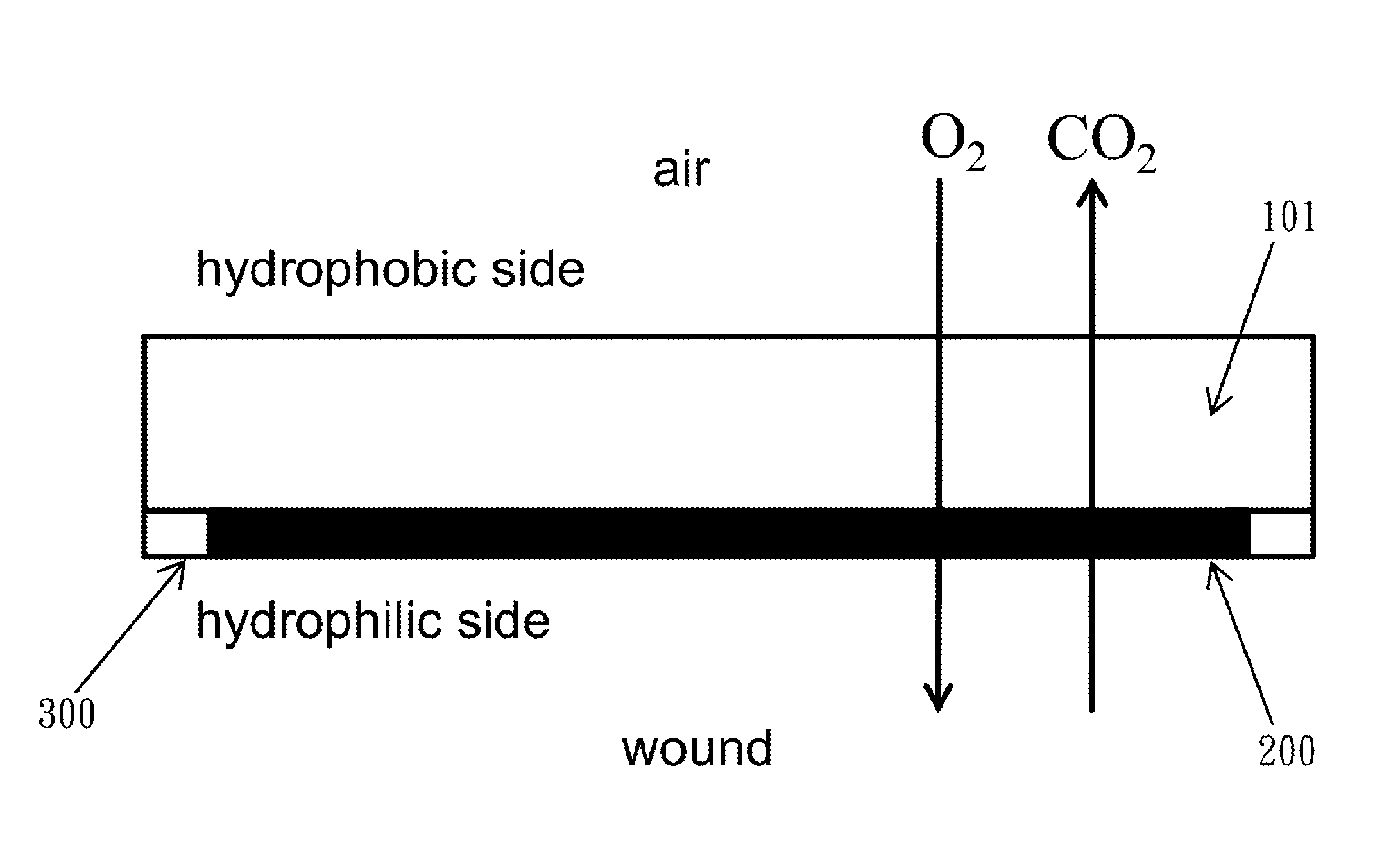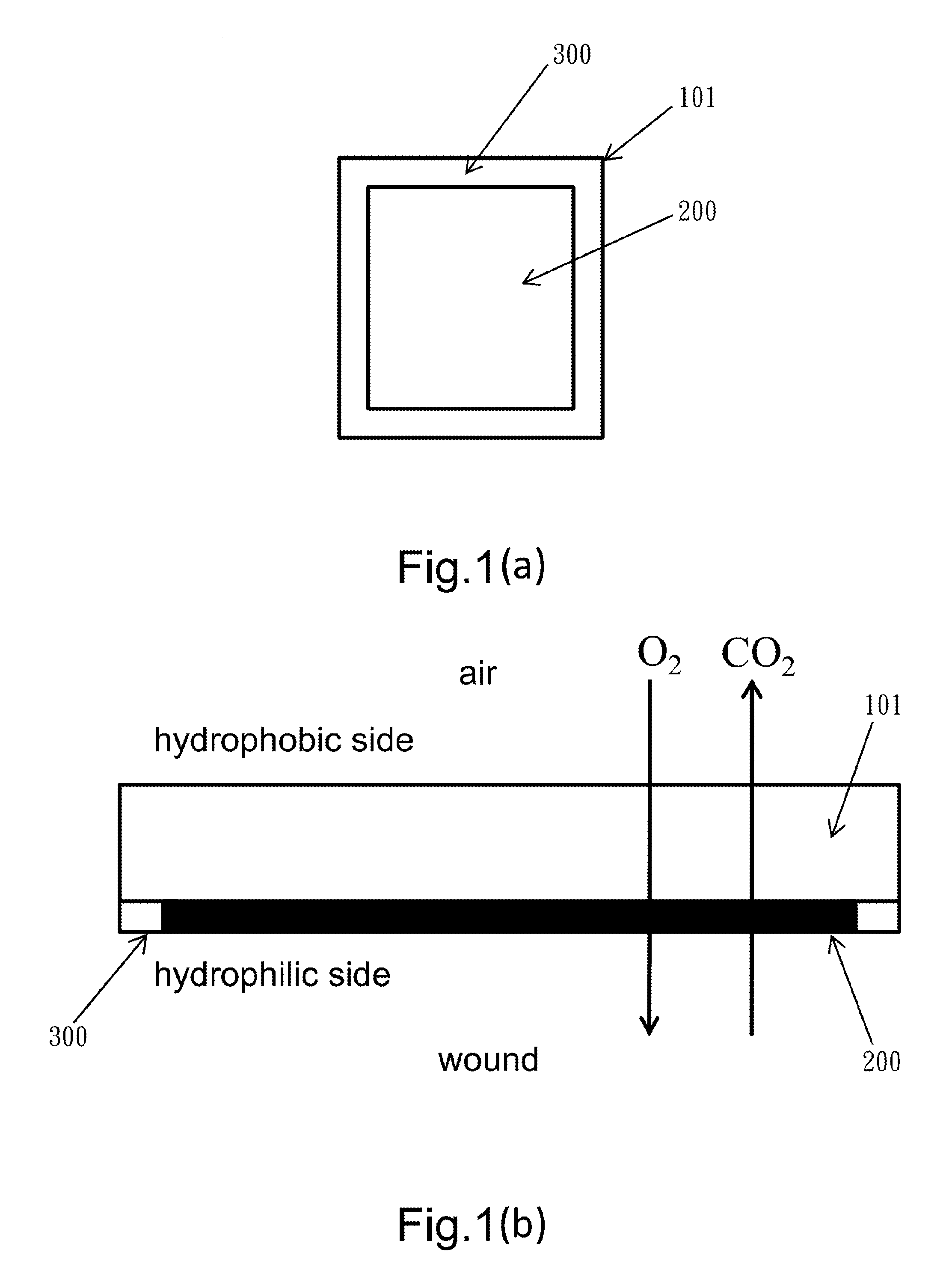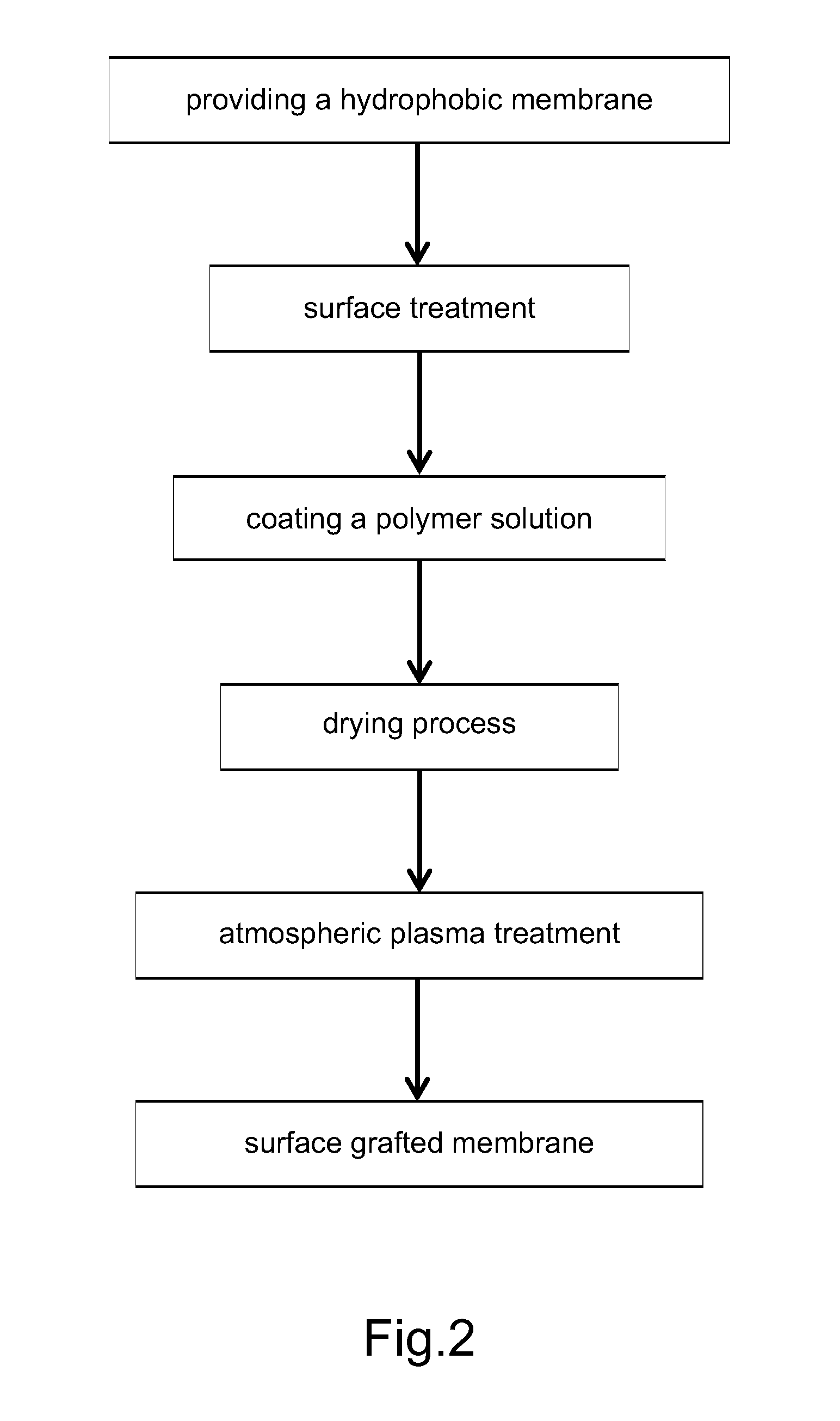Wound Healing Material And Application Thereof
a wound and material technology, applied in the field of wound healing materials, can solve the problems of unsatisfactory inflammatory effects, poor permeability, dirty polyethylene or polyurethane, etc., and achieve the effect of reducing the cost of mass production and keeping the wound air-breathable and mois
- Summary
- Abstract
- Description
- Claims
- Application Information
AI Technical Summary
Benefits of technology
Problems solved by technology
Method used
Image
Examples
example 1
Fabricating PTFE-g-PEGMA / SBMA / TM / SA Wound Healing Materials
[0048]FIG. 2 shows a flow chart of the method for fabricating a wound healing material. PTFE membranes are used as hydrophobic membranes to fabricate the PTFE membrane grafted with (a) PEGMA (polyethylene glycol methacrylate), (b) SBMA (polysulfobetaine methacrylate or PSBMA), (c) TM ([2-(Methacryloyloxy)ethyl]-trimethylammonium chloride), and SA (3-Sulfopropyl methacrylate potassium salt) on one surface where (c) and (d) are used as the control groups. The first surface of each PTFE membrane is an inactive hydrophobic surface. After the PTFE membranes are then placed in a vacuum chamber and the first surface of each membrane is processed by argon plasma (power 150 W for 60 seconds), the PTFE membranes are exposed in air at 40° C. for 10 min. 30 wt % of PEGMA (or SBMA) solution is coated on the first surface and dried. Then, the first surface coated with the polymer (PEGMA or SBMA) solution is processed by argon plasma under...
example 2
Method for Fabricating a Wound Healing Material
[0058]The following will describe an example of using PVDF membranes as the fluoro-containing hydrophobic membranes to fabricate the PVDF-g-SBMA wound healing material. FIG. 10 shows a processing flow diagram of fabricating a wound healing material of PVDF-g-SBMA. FIG. 11 shows the FTIR spectra of PVDF (virgin PVDF), PVDF-OH, and PVDF-g-PSBMA where PVDF-g-PSBMA is processed by plasma for 30 / 60 / 90 / 120 seconds, separately.
[0059]FIG. 12 shows the relations of the argon plasma processing time with the grafting density and the water contact angle of the wound healing materials when SBMA is grafted to the surface of PVDF membrane.
[0060]Protein Adsorption Test
[0061]FIG. 13 shows the plasma protein adsorption test result of PVDF (virgin PVDF), PVDF-OH, and PVDF-g-PSBMA illustrating the relation between the plasma protein adsorption percentage and the processing time of the plasma treatment.
example 3
Fabricating Wound Healing Patches
[0062]The wound healing material prepared by the method in example 1 is used where the PTFE membrane grafted with PEGAM or SBMA (PTFE-g-PEGMA or PTFE-g-SBMA) is formed. As shown in FIG. 1, PEGMA or SBMA are grafted on the center portion of the PTFE surface and a pressure sensitive adhesive layer, such as polyvinyl ether adhesive and copolymer acrylate, is formed on the peripheral portion of the surface. In FIG. 1, the shape of the area grafted with PEGMA or SBMA is a rectangle and is only an example. Other shapes, such as circular, oval, or any polygonal shape, can be used. The shape of the membrane can be any other shape, such as circular, oval, or any polygonal shape, besides the rectangular shape shown in FIG. 1.
[0063]Animal Experiment of the Wound Healing Patches
[0064]The above prepared wound healing patches according to the invention are used as the test samples to cover the wounds of a mouse (wound size 1.5×1.5 cm2) and then adhesive tapes bein...
PUM
| Property | Measurement | Unit |
|---|---|---|
| water contact angle | aaaaa | aaaaa |
| molar ratio | aaaaa | aaaaa |
| humidity | aaaaa | aaaaa |
Abstract
Description
Claims
Application Information
 Login to View More
Login to View More - R&D
- Intellectual Property
- Life Sciences
- Materials
- Tech Scout
- Unparalleled Data Quality
- Higher Quality Content
- 60% Fewer Hallucinations
Browse by: Latest US Patents, China's latest patents, Technical Efficacy Thesaurus, Application Domain, Technology Topic, Popular Technical Reports.
© 2025 PatSnap. All rights reserved.Legal|Privacy policy|Modern Slavery Act Transparency Statement|Sitemap|About US| Contact US: help@patsnap.com



